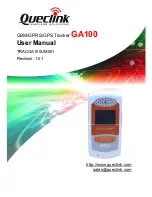
12-34
Garmin GTN 725/750 Pilot’s Guide
190-01007-03 Rev. D
Foreword
Getting
Started
Audio &
Xpdr Ctrl
Com/Nav
FPL
Direct-To
Proc
Charts
Wpt Info
Map
Traffic
Terrain
Weather
Nearest
Services/
Music
Utilities
System
Messages
Symbols
Appendix
Index
12.3.1.3 Radar Signal Attenuation
The phenomena of weather attenuation needs to be kept in mind whenever
operating the weather radar. When the radar signal is transmitted, it is
progressively absorbed and scattered, making the signal weaker. This weakening,
or attenuation, is caused by two primary sources, distance and precipitation.
Attenuation because of distance is due to the fact that the amount of radar
energy at a distance from the antenna is inversely proportional to the square of
the distance. The reflected radar energy from a target 40 miles away that fills the
radar beam will be one fourth the energy reflected from an equivalent target 20
miles away. This would appear to the operator that the storm is gaining intensity
as the aircraft gets closer. Internal circuitry within the GWX system compensates
for much of this distance attenuation.
Attenuation due to precipitation is not as predictable as distance attenuation.
It is also more intense. As the radar signal passes through moisture, a portion
of the radar energy is reflected back to the antenna. However, much of the
energy is absorbed. If precipitation is very heavy, or covers a large area, the
signal may not reach completely through the area of precipitation. The weather
radar system cannot distinguish between an attenuated signal and area of no
precipitation. If the signal has been fully attenuated, the radar will display a
“radar shadow.” This appears as an end to the precipitation when, in fact, the
heavy rain may extend much further. A cell containing heavy precipitation may
block another cell located behind the first, preventing it from being displayed
on the radar. Never fly into these shadowed areas and never assume that all of
the heavy precipitation is being displayed unless another cell or a ground target
can be seen beyond the heavy cell. The WATCH™ feature of the GWX Weather
Radar system can help in identifying these shadowed areas. Areas in question
will appear as “shadowed” or gray area on the radar display. Proper use of the
antenna tilt control can also help detect radar shadows.
Attenuation can also be due to poor maintenance or degradation of the
radome. Even the smallest amount of wear and tear, pitting, and pinholes on the
radome surface can cause damage and system inefficiency.
Summary of Contents for GTN 725
Page 553: ......
















































